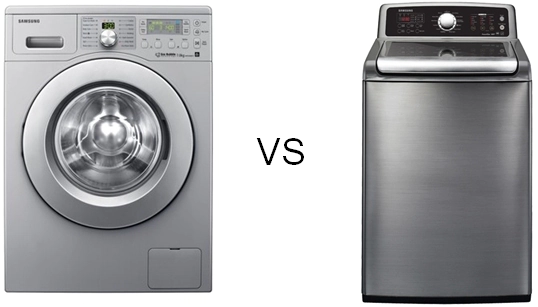The introduction of washing machines to the Indian market is one of the best developments. For Indian families burdened by multiple loads of manual washing, that was also the best thing to happen. Before the invention of automatic washing machines, even bed linen had to be hand-washed. The detergents and scrubbing of this washing were also harmful to hands.
There are two primary varieties of home washing machines: front load and top load. Top load washing machines were almost always more affordable. Still, now that laundry technology has improved, and both models can be large, small, or extremely efficient, pricing has become much more varied.
Whichever best washing machine brand you choose from front load vs top load washing machine, there are a few best practices to follow to ensure a reliable, long-lasting machine.
Pros and Cons of front-loading vs top-loading washers
Top Load Washers
Once, top load washers were the most common and least expensive washing machines available for residential use. Indeed, many people continue to favor top load washers, which have several advantages – not the least of which is that they are frequently less expensive.
Pros of Top Load Washers
- Loading the washer requires no bending. This can be less taxing on the back and joints, particularly for individuals with mobility issues.
- Top load washers with agitators are frequently significantly less expensive than high-efficiency and front load washers.
- While models vary considerably, many top-load washers feature faster cycle times.
- Water evaporates rapidly upward from the machine, minimizing the possibility of mould or mildew growth.
- Adding clothes in the middle of the cycle is simple — ideal for busy families.
Cons of Top Load Washers
- Agitator-style top-loaders with their winding mechanism do not clean as thoroughly or as efficiently as front loaders with their tumbling motion.
- Because the agitator consumes space, models with an agitator may not fit as much clothing every cycle.
- Top-load washers consume more water and energy than front-load washers.
- Because of the agitator, top load machines can be hard on fabrics. The low water level and rapid spin speed of high-efficiency models can result in more tangling of laundry.
Front Load Washers
Clothes are rotated around a vertical central axis by top-loading machines. In contrast, front-loading machines tumble clothes within a horizontal drum. The tumbling motion of the horizontal drum depends partially on gravity, so spinning the vertical drum takes much more energy and resources. As a result, front-load washers provide a whole host of benefits.
Pros of Front Load Washers
- Clothes can be retrieved in a more pristine condition. Gravity and friction are combined in a front load washer’s tumbling motion, effectively eliminating stains and spots with minimal water and energy.
- All front loaders are extremely efficient, consuming significantly less water in the long run.
- Front-load washers can also help you save time on the drying cycle. With a tumbling action, water drains more easily from garments, so they come out of the washer-dryer more efficiently, further lowering energy consumption.
- Front-load washers may be more accessible to individuals in wheelchairs or small children.
- Front-load washers and dryers can be stacked to maximize space efficiency.
Cons of Front Load Washers
- Loading a front load washer requires bending or squatting, which can be uncomfortable. You can stack your washer on a pedestal to make things a little more comfortable.
- Front load washers are more labour-intensive to maintain than top load washers.
- You cannot always put clothing in mid-cycle due to the door’s anti-leakage feature.
- Because water evaporates more slowly in front load washers, mould and mildew problems may occur more frequently.
- Front load washers are more susceptible to damage caused by overloading due to how weight is distributed during a tumble-style wash.
Advice on Getting the Most from Your Washing Machine
- Ensure that the machine is not overloaded. This results in dirtier garments, increased machine strain, and energy waste. This is particularly taxing on front load washers’ weight distribution.
- Ensure that you are using the recommended amount of detergent. Always refer to your owner’s handbook and the instructions on the detergent bottle to ensure that you are not using too much detergent, which can harm the machine, result in inadequately cleaned clothes, or even result in messes or mould/mildew problems.
- Maintain an open door between washes. This aids in the evaporation of excess moisture, which prevents mould or mildew growth (which causes unpleasant smells that can transfer to clothes).
- When deciding between front loading vs top loading washing machines, there is no right answer – it is entirely dependent on your individual needs and requirements.
Also, read this: Have You Tried These Any Shampoo For Hair Growth?

